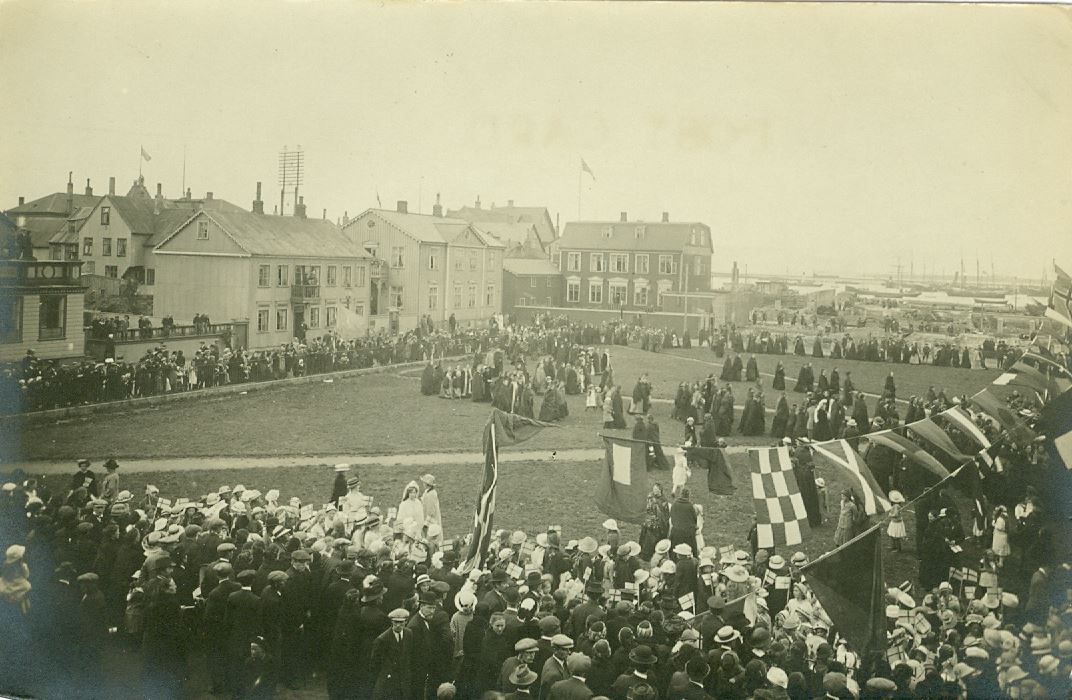Today, June 19th, known in Iceland as Kvenréttindadagurinn or Women’s Rights Day, marks 110 years since women in Iceland first gained the right to vote and run for parliament. On this day in 1915, King Christian X of Denmark signed a new constitution for Iceland, granting women aged 40 and over both voting rights and eligibility for election to the national parliament, Alþingi.
This historic milestone was the result of decades of activism. Icelandic women had begun campaigning for suffrage as early as 1885, though the first formal public demand came in 1895. In fact, the Icelandic parliament had already passed a bill to grant women the vote in 1911, but it was rejected by the Danish king, who held veto power under Iceland's constitutional arrangement at the time. It was not until 1915 that the law was finally enacted—albeit with a unique restriction: only women 40 years and older could vote. No other country imposed such an age limit on women’s suffrage.
A Symbolic Victory—and the Start of More Change
Though the 1915 legislation was a compromise, it was still a turning point. As Professor Erla Hulda Halldórsdóttir, an expert in women’s and gender history at the University of Iceland, explains: “Women saw this as recognition of their status as legal citizens and independent individuals.”
Contemporary accounts, such as reports in Kvennablaðið, a newspaper founded by leading suffragist Bríet Bjarnhéðinsdóttir, describe celebrations in Reykjavík’s Austurvöllur square, where women marched, made speeches, and rejoiced at this long-awaited step toward equality.
Still, this was not a full victory. Lawmakers originally planned to lower the voting age gradually each year until it matched that of men. But a significant development in 1918 accelerated this process: the Danish–Icelandic Act of Union, which declared Iceland a sovereign state while maintaining the Danish crown, also guaranteed equal civil rights for Icelandic and Danish citizens. This led to the removal of the 40-year age requirement, granting Icelandic women full suffrage rights, just as Danish women had received earlier that same month, on June 5, 1915.
Not Without Struggle
Professor Erla Hulda Halldórsdóttir, in an interview with mbl.is, underscores that this achievement was not handed to Icelandic women easily. “It’s sometimes said women didn’t have to fight hard to gain the vote, but that’s not true. There were no mass protests, but suffragists like Bríet Bjarnhéðinsdóttir were tireless in their lobbying and public outreach.”
These campaigners engaged with parliamentarians, held public meetings, and wrote extensively about women's rights. “They knew that change would only come if those in power were persuaded,” says Professor Erla. “In modern terms, their strategy could be described as intense lobbying.”
A Global Context
Iceland was among the earlier adopters of women’s suffrage, though not the first. New Zealand granted women the vote in 1893, and Finland was the first European country to do so in 1906.At the other end of the timeline, Liechtenstein became the last European country to grant women voting rights in 1984.
In many parts of the world, voting rights were extended only to white women of certain social classes, excluding Indigenous and immigrant women. Icelandic women were fortunate to achieve relatively inclusive legislation early on, despite the age-based limitation.
From Legal Rights to Real Power
Professor Erla points out that the right to vote was about more than ballots, it was about participation. “Suffragists believed that with legal rights, they could influence laws and improve society. But legal change is not the same as real-world empowerment. It took time for women to gain the political space to exercise those rights.”
In fact, it was not until 1922 that the first woman, Ingibjörg H. Bjarnason, was elected to Alþingi, seven years after the law changed. Bríet herself ran for office in 1916 and likely would have won, had last-minute changes to vote-counting laws not worked against her.
Celebrating a Century of Progress
Kvenréttindadagurinn is both a celebration and a call to remember the long road that led to equality. The women who fought for the right to vote did so not only for themselves, but for generations to come.
As Professor Erla puts it: “This was a major step, because women believed that with these legal rights, they could help shape the nation’s laws and society. And though progress was slower than hoped, their legacy lives on in every woman who votes, runs for office, and makes her voice heard today.”

